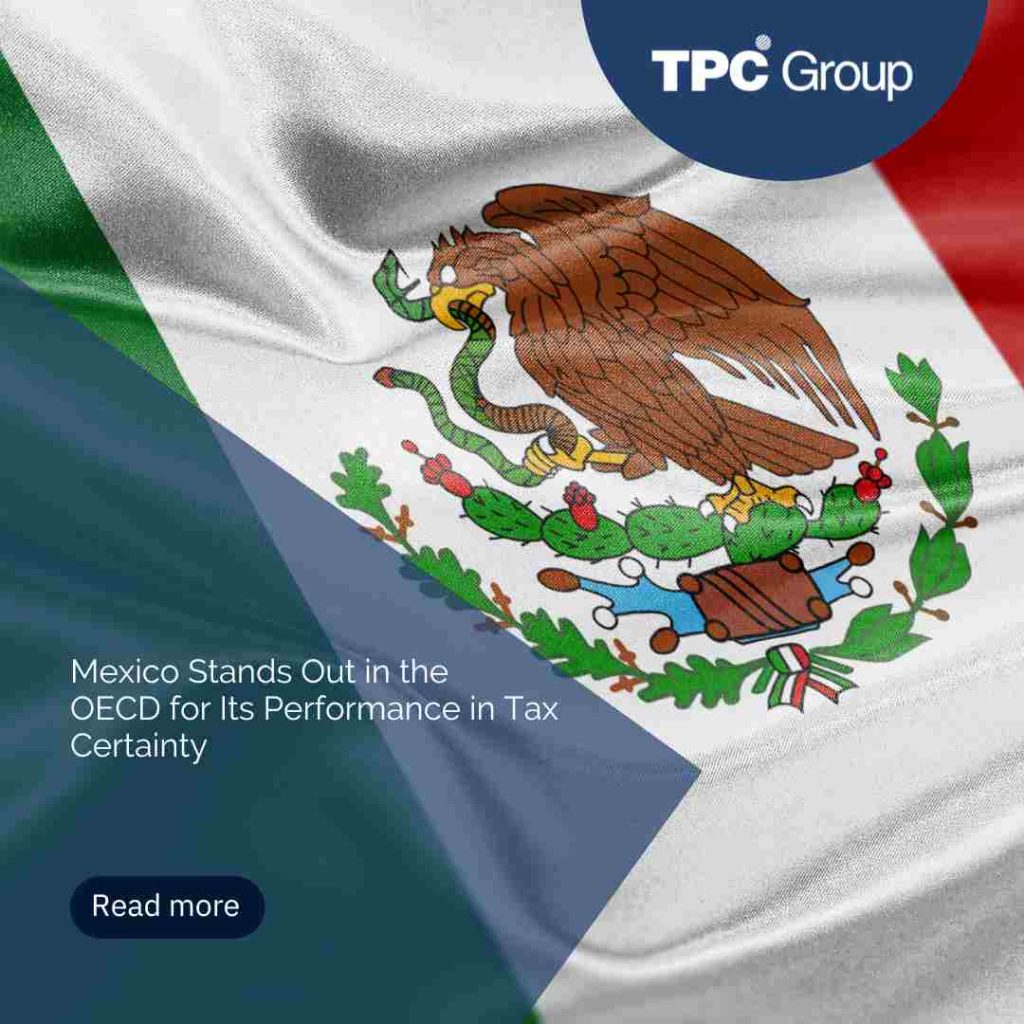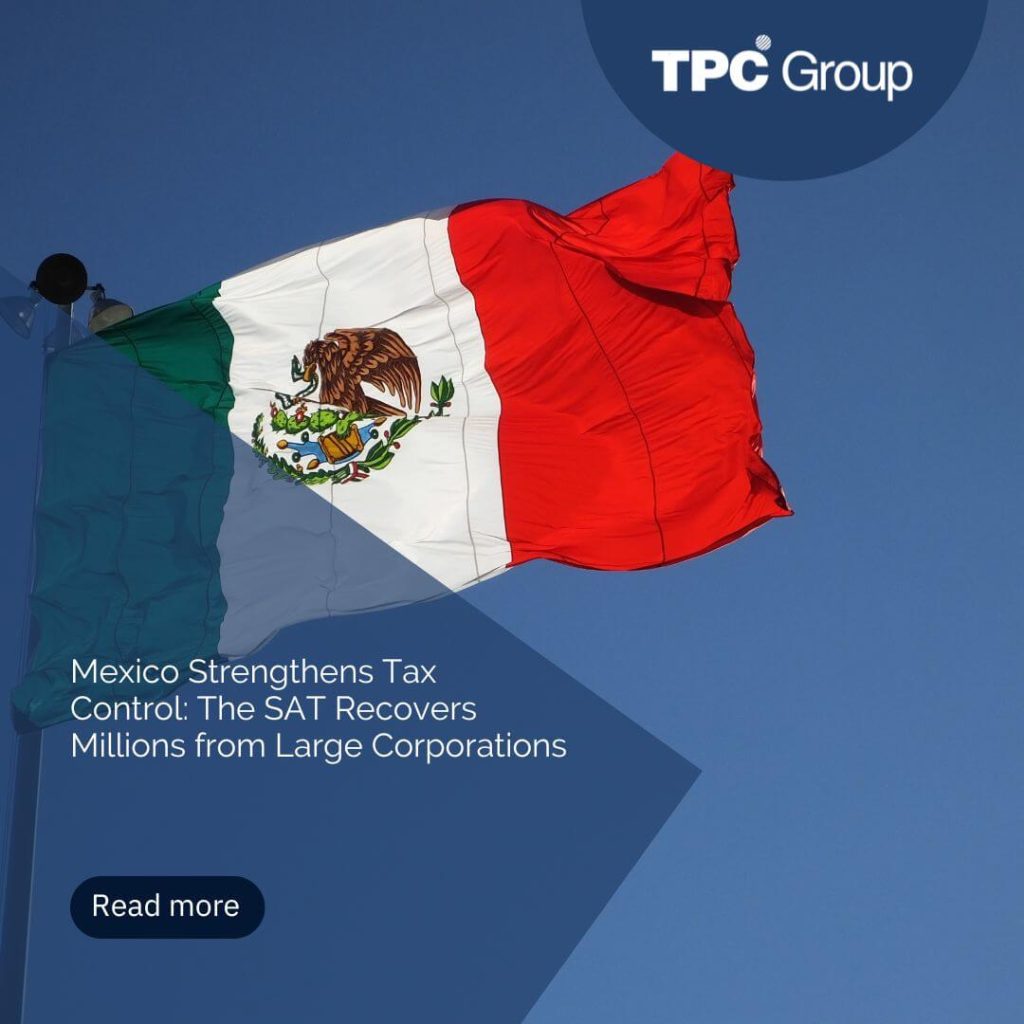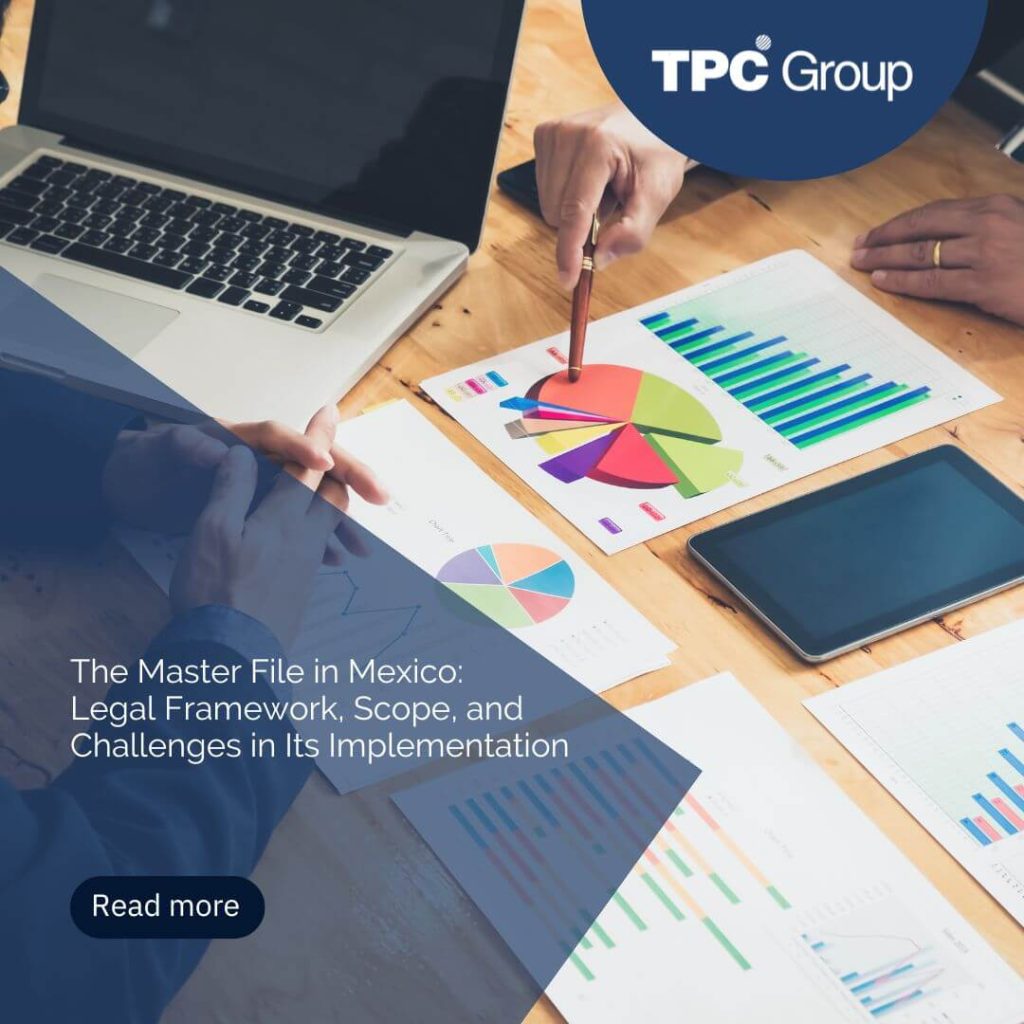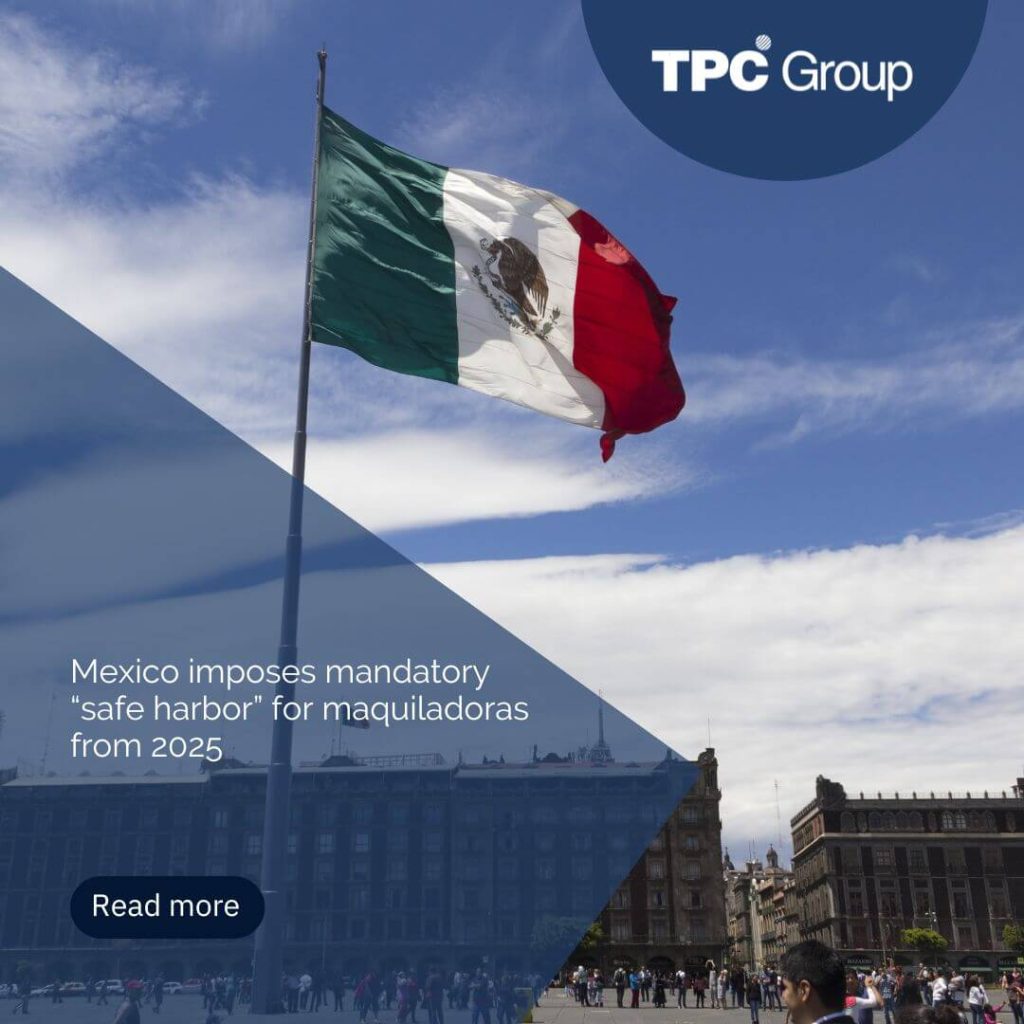Concept and Regulation in Mexico
Taxpayers performing related party transactions must know they are subject to tax obligations established in the Income Tax Law and the Federal Tax Code. These obligations are included in the corresponding commitments due to the status of Title II corporate taxpayers or Title IV individual taxpayers to enter into related-party transactions precisely.
Transfer Pricing in Mexico began in 1995, becoming one of the countries with the longest history in implementing the Transfer Pricing regulations. Hence, the legislation in this area has been reformed and expanded.
Mexico has adapted its tax regulations according to the guidelines of the BEPS (Base and Erosion and Profit Shifting) Plan actions of the Organization for Economic Cooperation and Development (OECD) to combat tax avoidance or evasion.
Implementing Action 13 of the BEPS Plan in Mexico is of great significance regarding supporting documentation, which allows the different Tax Agencies worldwide to exchange information on multinational groups through the Country-by-Country Report (CBC Report). This regime is currently regulated in Articles 76, 76-A, 179, and 180 of the Income Tax Law (ITL) and some articles of the Federal Tax Code. Likewise, there is special legislation on this matter regarding maquila and hydrocarbons.
Arm’s Length Principle: Concept
This principle is a fundamental pillar regarding Transfer Pricing, stating that prices agreed among related parties must be agreed upon at market value, i.e., as those of independent parties.
Regarding the Mexican legislation, a definition of market prices is established in Title VI – Chapter II Article 179, penultimate paragraph of the Income Tax Law (ITL): (…) Market prices are the prices and amounts of consideration used with or among independent parties in comparable transactions or when the taxpayer has been granted a favorable resolution in the terms of Article 34-A of the Federal Fiscal Code. The Arm’s Length Principle is also stated in the following sections of the ITL:
- Title II for Legal Entities – Chapter IX on Moral Obligations – Article 76, sections IX and XII.
- Title IV for Individuals and General Provisions – Article 90 Paragraph 11.
- Title V for residents abroad with income from sources of wealth located locally – Second paragraph of Article 153.
- Title VI for foreign-controlled entities subject to preferential tax regimes of multinational companies and related party transactions – Chapter II of multinational companies and related party transactions – First paragraph of Article 179 of the Income Tax Law.
Criteria to Identify Related Parties
According to paragraphs 5 to 7 of Article 179 of the LISR, one or more will be considered related parties when:
Two or more persons are considered related parties when one participates directly or indirectly in the administration, control, or capital of the other, or when one person or group of persons participates directly or indirectly in the administration, control, or capital of said persons. In the case of joint ventures, its members are considered as related parties as well as persons who, according to this paragraph, are considered related parties of said member. Related parties of a permanent establishment are considered the head office or other permanent establishments of the same, as well as the persons mentioned in the previous paragraph and their permanent establishments. Companies or entities subject to preferential fiscal regimes with respect to the taxpayer residing in Mexico.
Transfer Pricing Methods in Mexico
For the analysis of related party transactions, Mexican legislation has provided for six methods, which, according to Article 180 of the Income Tax Law, are as follows:
- Comparable Uncontrolled Price method.
- Resale Price method.
- Cost Plus method.
- Profit Split method.
- Residual Profit Split method.
- Transactional Net Margin method.
It also establishes a hierarchy regarding the use of the methods, indicating that the Uncontrolled Comparable Price Method should be applied first and the others above may only be employed if the first method is not appropriate.
Article 180 of the ITL also points out the priority of methods when the Comparable Uncontrolled Price (CUP) method is discarded:
“(…) It must be demonstrated that the method used is the most appropriate or the most reliable according to the available information, preferring to the methods provided in sections II (Resale Price) and III (Cost Plus) of said article.”
Comparability Analysis in Mexico
According to the third paragraph of Article 179 of the Law, in order to determine whether a related party transaction is comparable to a transaction carried out by independent parties, the following comparability criteria shall be considered:
- Characteristics of the transactions.
- The functions or activities, assets, and risks assumed in the transactions.
- The contractual terms.
- Economic circumstances.
- Business strategies.
On the other hand, as of fiscal year 2022, the same article, in its fourth paragraph, states that the financial information of the companies selected as comparable from the current fiscal year to the fiscal year under analysis of the taxpayer must be used when the business cycles or commercial acceptance of a product of the taxpayer cover more than one fiscal year, information from comparable transactions for two or more fiscal years, prior or subsequent, may be considered.
Functional Analysis
According to Article 76, section IX of the ITL, dual functional analysis is required, i.e., the Reports and the Supporting Documentation must contain information about the functions, assets, and risks assumed by the taxpayer and the related parties for each type of transaction.
Formal Documentation Requested by the Authority
According to Articles 76 and 76-A of the Income Tax Law, the Supporting Documentation and the informative affidavits to be filed to the SAT (Servicio de Administración Tributaria – Tax Administration Service) are as follows.
Information Statement of Related Party Transactions – Annex 9 of the Multiple Information Statement (DIM)
According to Section X of Article 76 of the ITL, taxpayers must file Annex 9 of the Multiple Informative Statement (DIM) for transactions recorded with both national and foreign related parties. The information required in this statement includes identification details of all related parties and the type and amount of transactions conducted with each. Additionally, information on the Transfer Pricing methodology used for each transaction must be provided, including the determined value ranges if comparables were used. Details on searches conducted in the study, adjustments during the period, and confirmation of the availability of the Transfer Pricing study are also requested.
Anual Information Statements of Related Parties
According to the measures outlined in BEPS Action 13 and as established in Article 76-A of the ITL, three types of additional annual information statements were adopted for those taxpayers who engage in related party transactions as indicated in Articles 32-A, second paragraph, and 32-H, sections I, II, III, IV, and VI of the Federal Tax Code, as well as taxpayers established in Article 76, sections IX and XII, regarding Article 179, first and last paragraphs of the ITL. (Described in the item section titled “Parties Subject to Keep and/or File the Supporting Documentation and Information Statements”). These statements are:
- Master Information Statement: It must contain the organizational structure of the multinational group of the taxpayer, a description of the activities of the member companies of the group, a description of the intangible assets of the group, financial activities with related parties, as well as the financial and tax situation of the companies of the group.
- Local Information Statement: It must contain the description of the organizational structure, strategic and business activities, related party transactions, as well as the financial information of the obligated taxpayer and the operations or companies used as comparables in their analyses.
- Country-by-Country Information Statement: It must include information at the tax jurisdiction level about the global distribution of income and taxes paid. Indicators of the location of economic activities in the tax jurisdictions where the multinational business group operates in the corresponding fiscal year and, additionally, a list of all the member entities of the multinational business group. The Country-by-Country information statement must be filed by the taxpayers above-mentioned when they are in any of the two situations described below:
- They must be multinational controlling legal entities, for which they must meet the following requirements:
- To be residents in Mexico.
- To have subsidiaries defined in terms of financial reporting standards or permanent establishments located abroad, according to the situation.
- Not to be subsidiaries of another company resident abroad.
- To be required to prepare, file, and disclose consolidated financial statements in financial reporting standards terms.
- To report the results of entities resident in one or more other countries or jurisdictions in the consolidated financial statements.
- To have obtained consolidated revenues equal to or exceeding 12 billion pesos for accounting purposes in the immediately preceding fiscal year.
- To be legal entities resident in the Mexican territory or resident abroad with a permanent establishment in the country, designated by the controlling legal entity of the multinational corporate group resident abroad as responsible for providing the Country-by-Country information statement.
- They must be multinational controlling legal entities, for which they must meet the following requirements:
Likewise, it indicates that in cases where the Mexican tax administration cannot obtain the information corresponding to the Country-by-Country Report through information exchange mechanisms, it may require such a statement from the subsidiaries of a foreign company resident in Mexico or non-residents who have a Permanent Establishment in Mexico.
Supporting Documentation in Mexico
Section IX of Article 76 of the Law states that supporting documentation of related party transactions must be available to demonstrate they were carried out at market value. For this purpose, the documentation must contain:
- Identification data of the related parties.
- Information on the functions, assets, and risks the taxpayer assumes in the transaction.
- Information and documentation of related party transactions and their amounts for each related party and each type of operation according to the classification, as well as with the comparability data and elements established by Article 179 of the ITL.
- The applied methodology, information and documentation on comparable transactions or companies for each type of operation, and details in the adjustment application that, where applicable, have been made in terms of Article 179, the third paragraph of the ITL.
Conversely, taxpayers who meet any of the following requirements are exempt from the obligation to have such documentation:
- Taxpayers performing business activity whose income has not exceeded $13,000,000.00 in the immediately preceding fiscal year.
- Taxpayers whose income derived from the rendering of professional services has not exceeded $3,000,000.00 in such fiscal year.
On the other hand, those taxpayers not listed in the preceding paragraphs a) and b), as well as those in the situation referred to in the penultimate paragraph of Article 179 of the ITL and those who are contractors or assignees in terms of the Hydrocarbons Revenue Law, must have supporting documentation.
Obligated Parties to File the Transfer Pricing Documentation
The conditions to be complied with are established in Article 76-A, Title II, Chapter IX of the ITL, which points to:
Legal entities performing related party transactions and being required to report their financial statements through a certified public accountant according to Article 32-A of Title II of the Federal Tax Code, i.e., whose declared accumulable income in the last immediate preceding fiscal year was equal to or greater than $1,779,063,820, as well as those that at the end of the immediately preceding fiscal year have shares placed among the general investing public on the stock exchange.
The amount of the quantity established in the previous paragraph will be updated in January of each year with the update factor corresponding to the period from December of the penultimate year to December of the last year immediately before the one for which the calculation is made, according to the procedure referred to in Article 17-A of this Code.
(Paragraph amended DOF 12-11-2021)
Legal entities performing related party transactions and filing information on their tax situation according to Article 32-H sections I, II, III, IV, and VI as follows:
Those who in the immediately preceding year declared in their normal income tax returns accumulable income equal to or greater than $974,653,950.00, as well as those that at the end of the immediately preceding fiscal year have shares placed among the general investing public on the stock exchange and are not found in any other case indicated in this article.
The amount of the quantity established in the previous paragraph will be updated in January of each year with the update factor corresponding to the period from December of the penultimate year to December of the last year immediately before the one for which the calculation is made, according to the procedure referred to in Article 17-A of this Code.
(Amount of the paragraph updated by tax law amendments DOF 05-01-2022, 27-12-2022).
- Commercial societies of the optional tax regime for corporate groups, i.e., those meeting the requirements established in Chapter VI, Title II of the ITL to be considered integrating/integrated societies.
- State-owned entities of the federal public administration.
- Foreign-resident legal entities with a permanent establishment (PE) in Mexico. Only for activities they perform in those PEs.
- Taxpayers who are related parties of the subjects established in Article 32-A, second paragraph of the Federal Tax Code.
- Legal entities whose income exceeded $13,000,000 in the immediately preceding year, performing business activities with related parties. Likewise, those obligated are residents in Mexico who have registered transactions with societies or entities subject to preferential tax regimes and those proceeding as contractors or assignees in terms of the Hydrocarbons Revenue Law. This is according to Article 76 section IX and as indicated in the penultimate paragraph of Article 179 of the ITL.
- Legal entities performing related party transactions according to Article 76, section XII.
- Legal entities, individuals, and multinational companies are taxpayers of the ITL performing related party transactions regarding the first and last paragraph of Article 179 of the ITL.
Expiration of Transfer Pricing
Filing Schedule by Type of Obligation
| Type of obligation | Expirations Mexico – Fiscal Year 2023 |
|---|---|
| Local Information Statement | May 15, 2024 |
| Master Information Statement | December 31, 2024 |
| Country by Country Report | Report December 31, 2024 |
The study or documentation of Transfer Pricing must be preserved by the taxpayer and available to the Tax Administration upon request through written communication for the purposes of reviews or audits.
According to the update in the DOF 11-12-2021, which amends Article 76 A of the ITL, taxpayers must annually provide the following statements concerning related parties (supporting documentation):
- Master information statement of related parties from the multinational business group.
- Local information statement of related parties.
- Country-by-country information statement from the multinational business group.





